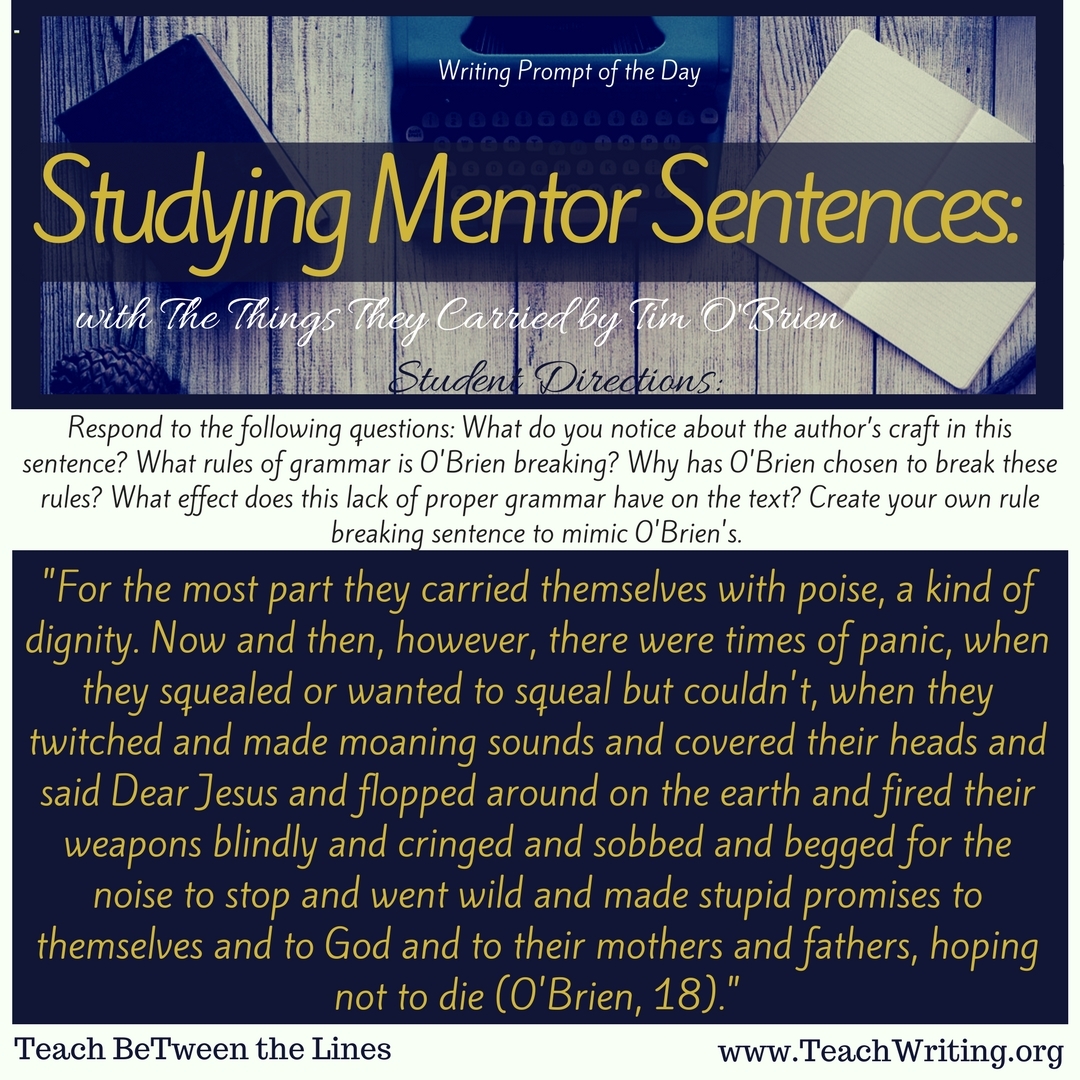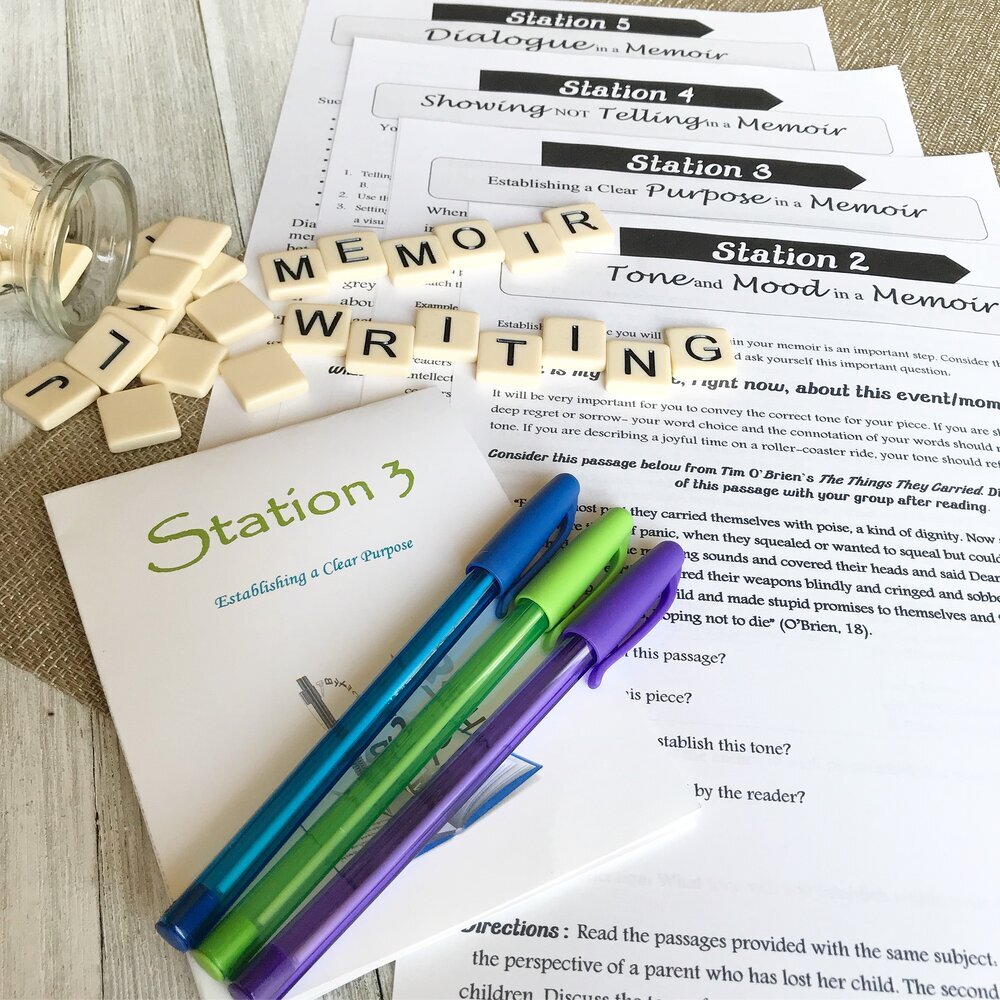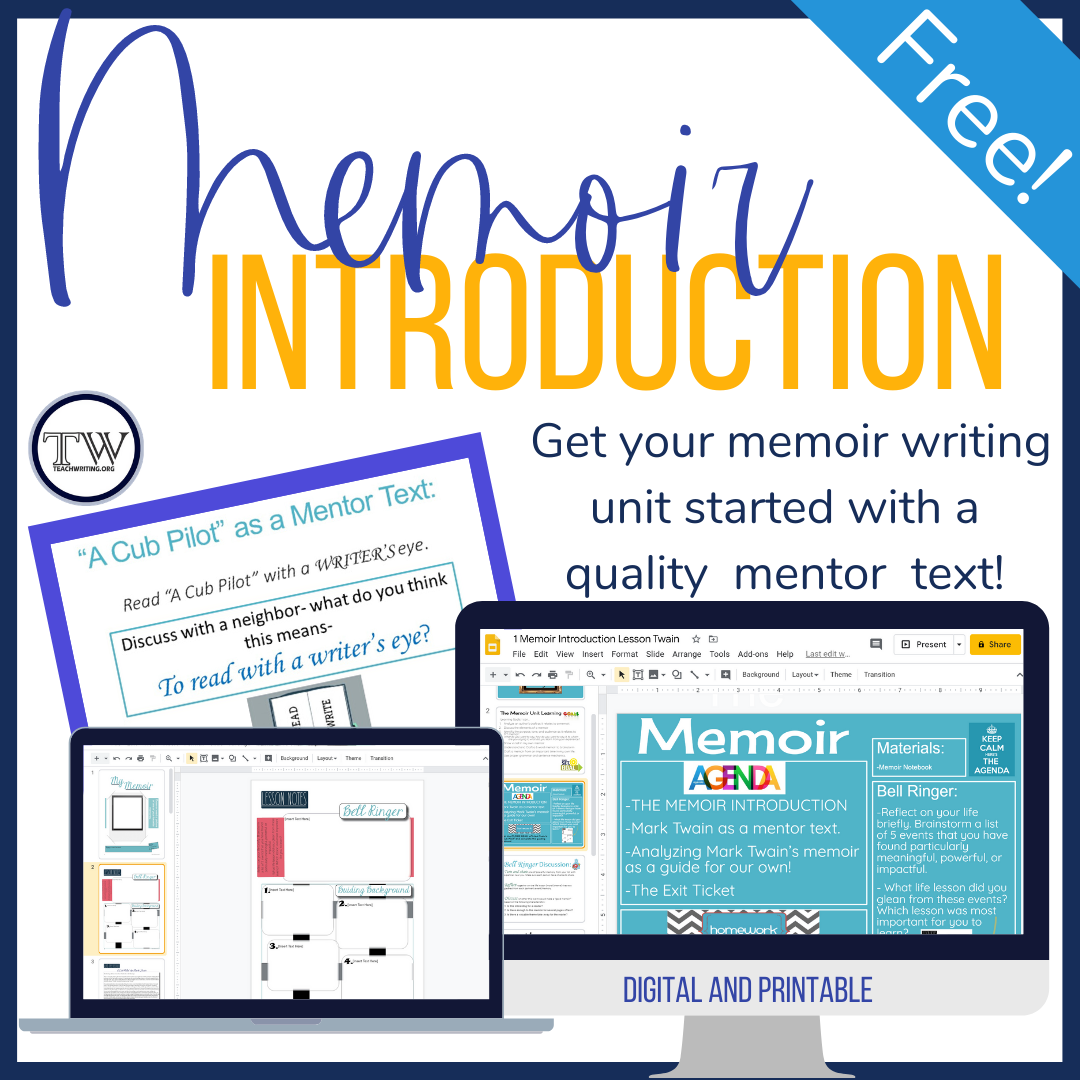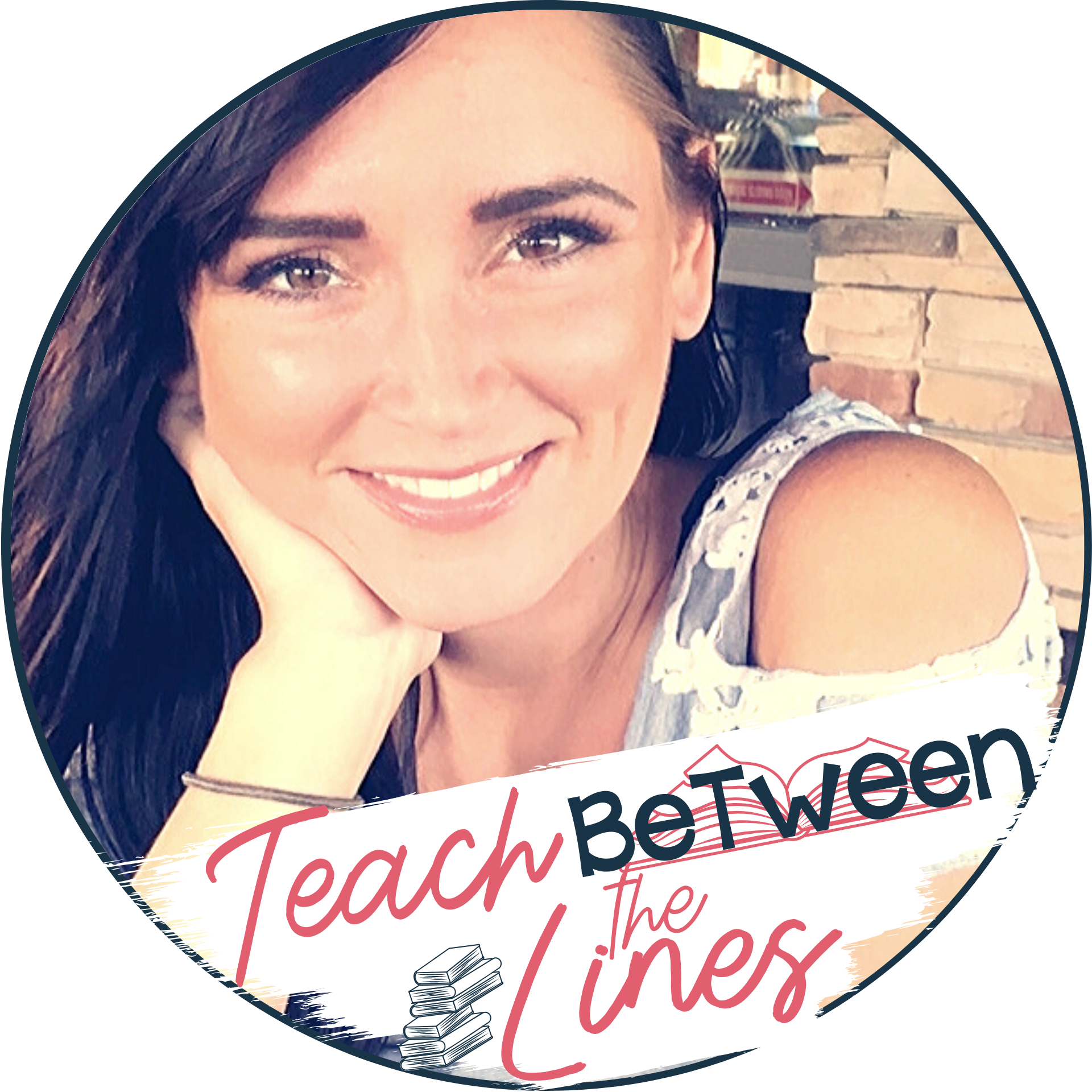Using Mentor Texts to Teach Writing!
Understanding the many nuances of great writing can seem like a daunting challenge for teachers and students alike. As educators, we are aware of the strong correlation between good reading skills and good writing skills. This is because students are absorbing the author’s craft as they explore amazing works of literature. This knowledge has given rise to the popularity of mentor texts within the ELA classroom.
I have begun using a mentor text before every major writing assignment. I find a piece of literature that employs a similar writing style or mode of writing; a writing I want my students to emulate within their own work. We will then explore this mentor text together as a class or within stations that pose guiding questions. I want students to think deeply about an author’s craft, and I love when these examples can come from quality literature. Together we will look at this piece of writing for all of the critical elements I want my students to craft into their own writing piece. This can vary depending on our writing purpose, but I often look at development and/or organization, tone and mood, purpose, theme, word choice, “showing VS telling”, dialogue, foreshadowing, irony and the suspense it can create, character development, etc.
I use a mentor text for a bell ringer nearly every day. The purpose and selections will change with the unit or skill I am currently teaching. I love using mentor texts to teach sentence mechanics and grammar. After teaching compound or complex sentences, I will pull sentences from a popular novel to ask students how the author has crafted this/these sentences with correct mechanics. I have always taken issue with the D.O.L (Daily Oral Language) version of sentence and grammar instruction. With this methodology, students will investigate and explore incorrect and poorly written sentences in an attempt to fix them. I have to wonder what message they are really taking away from this experience when most of the lesson requires students to explore poor writing examples. Instead, students can spend meaningful time analyzing an author’s craft, and have rich discussions about what DOES work in a sentence or short passage. I have included a few examples of this type of bell ringer below. These can be found in our TeachWriting Free Resource Library!
I will also employ passages that demonstrate a strong tone, while I am teaching my tone and mood unit. Or, examples of rhetoric when I teach my rhetorical analysis unit. Short passages containing the various types of irony are wonderful at helping students practice with not only identifying the type of irony within a text, but they become skilled at seeking this out within a longer text, such as Maupassant ‘s “The Necklace”, or Chopin’s “The Story of an Hour”.
I begin each and every writing unit/assignment with a quality piece of literature. For example, when I ask students to write narrative texts, I pull several short examples of quality literature, and create stations for students to read and reflect on the author’s craft. Though the writing task is starkly different for expository or analysis writing, the use of mentor texts provides the same learning experience with different standards!
I recently taught a memoir unit to my 10th and 11th grade students. I asked students to use Mark Twain’s “A Cub Pilot” as a mentor text. They analyzed this piece of writing with an 'author’s eye'. Students were able to explore how Twain takes a report of a memory/incident in his life, and turn this into a lively, memorable, humorous, and touching story that caters to a wide audience. Students were guided to look at critical elements of a memoir, so they were able to incorporate these elements within their own writing. By examining Twain’s craft in this lesson, students learned fundamental principles of the memoirist’s art.
I also use mentor texts WITHIN my major writing units. I ask students to look closely at several exemplar texts during my memoir writing unit. To make this more meaningful and engaging for my students, I turned this into a stations exploration.
Station Topics:
Organization in a memoir. I focus on developing ideas in chronological order with the use of flashbacks to give background to the memoir. I use an example from The Outsiders to show students how they can develop interest and background with a flashback, but still tell their story in chronological order.
Tone and mood in a memoir. This station focuses on helping students to develop an appropriate tone/mood for their writing. I use a short excerpt from The Things They Carried to help students see the tone established by Tim O’Brien. I also ask students to explore two short texts, both on the same topic. The topic I chose was the death of a child. The first piece of text is a nonfiction article written with little emotion about a young child who has died in an accident, and the other is memoir piece written from a mother’s perspective. This, of course, is filled with emotion. I provide guiding prompts and questions to help students discuss the difference between the tone of each piece, and ask them to begin to think about the tone of their own writing piece.
Establishing a clear purpose in a memoir. I use an example from Fahrenheit 451 and The Declaration of Independence to showcase a clear purpose. I also have students reflect on the book cover for I am Malala. Guiding questions help students to discuss the purpose behind each of these pieces.
Showing - not telling in a memoir. I use several short excerpts from texts to show students examples of showing language. My favorite is an excerpt from The Lord of the Rings.
Dialogue in memoir. The purpose of this station is to get students to use interesting and meaningful dialogue in their memoir to help tell the story. I use an example from Of Mice and Men with guiding questions to help students analyze the writer’s craft.
Focusing and narrowing a topic. The final station is actually a fairly independent activity. Students will receive their topic brainstorming and idea planning sheet to begin drawing out their ideas. The guiding questions will help them narrow their topic to a specific moment in their life - one that is truly memorable and meaningful.
You can grab this unit introduction with all of the mentor texts, guiding questions, and instructional lesson here! Click on the image to the right! This will get your students started with their memoir writing unit!
If you are interested in the entire memoir unit which includes a guided lesson on each element of the memoir that incorporates specific examples from Twain’s memoir, stations with more mentor text examples to go even deeper into a memoirist’s craft, a 6 word memoir brainstorming activity, detailed revision checklist for self-editing and peer-editing, and an assessment rubric check out this unit bundle. This unit bundle also provides a lower level mentor text to study for students who may struggle with Mark Twain’s memoir! This larger unit can be found by clicking on the image to the left!
Related Articles:
3 Critical Lessons to Teach BEFORE Introducing Close Reading Strategies
"Talking to the Text" - A Close Reading Strategy That Works!
Liz is a collaborator on teachwriting.org and the founder of Teach BeTween the Lines. She has been teaching for over ten years; she has loved growing young minds through literature and the art of crafting the written word. She is currently working on her doctorate in Education from the University of Minnesota, and holds an M.A. in Education from St. Mary’s University, Minnesota. She loves to write short stories in her free time, especially in those cold Minnesota winters. She is supported by a wonderful family made better by the addition of her two beautiful children.
















